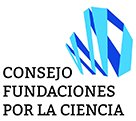Social pharmacology attempts to analyze the impact of social and cultural factors on the use and effects of drug products. A society like ours, where drug self-consumption is increasing steadily, must analyze the relationship between these drugs and the population, and its possible consequences. Indeed, despite its importance, this issue is seldom discussed in the customary scientific forums.
Ten experts from different fields and institutions gathered at this round table, organized by the Esteve Foundation on 26 May 2006 at Barcelona’s Hotel Front Marítim, to discuss two issues on pharmacology and society, respectively. The drug product’s social projection was moderated by Josep-Eladi Baños and Joan Bigorra, both from the Department of Experimental and Health Sciences of the Pompeu Fabra University of Barcelona.
The first submitter, Magí Farré, from the Pharmacology Unit of Barcelona’s Municipal Institute of Medical Research, defined Quality of Life (QOL) drugs, that is, drugs that improve the quality of life instead of curing or relieving a given disease. This category includes an extremely wide range of products, from antidepressants to cosmetics and beauty products, as well as legal and illegal drugs of abuse.
This latter issue was precisely the subject of the submission given by Farrés’ department colleague Sergio Abanades. After reviewing some of the illegal substances usually found in party-like environments, it was concluded that medicinal products and drugs of abuse are rather difficult to differentiate, particularly when the current drugs of abuse are old, recycled medicinal products.
Antonio Vallano, from Barcelona’s University Hospital Vall d’Hebron, approached another type of QOL drugs: aphrodisiacs. Although not defined officially, aphrodisiacs can be divided into sexual appetite-stimulating substances and therapeutic substances. Currently, these drugs are mostly male-directed, while doubts on the existence of female sexual dysfunctions remain to be clarified.
“Ours is an excessively narcotized population”, states Vicente Baos, from Madrid’s health center Collado-Villalba, upon providing data which suggest that, for example, more than one third of Spanish women older than 75 are psychodrug consumers. In Baos’ opinion, the population should be educated to improve its quality of life without so easily resorting to pharmacological treatments.
On her part, María Isabel Loza, from the University of Santiago de Compostela, approached an issue of major concern regarding the social use of a drug: self-medication. After clarifying a few allied concepts, such as self-care and self-prescription, Loza emphasized two facts: responsible self-medication may sometimes favor the patient, and the quality of information needs to be improved.
Julio Benítez, from the University of Extremadura, reflected on how genetic predisposition influences our reactions to drug products. In his view, the different bodily reactions to certain substances cast doubt on the effectiveness of measures such as establishing blood alcohol content (BAC) levels. Indeed, the effects of a given level may be harmful to some and derisive to others.
Viagra, Xenical and Tamiflu are the star drugs on the Internet. Incidentally, all three are prescription drugs. Pharmaceutical spam accounts for 50% of the junk mail that floods our inbox every day. A good part of the advertised products are exact fakes of drugs sold by laboratories. Antonio Salgado, from the University Hospital of Vall d’Hebron, remarked that these are just two examples of the challenges raised by the outbreak of the internet concerning the good use of drugs.
El País health editor Gonzalo Casino lectured on how conventional press and drug products should relate to each other. To face the avalanche of topics imposed on by other instances, Casino’s view is that journalists should provide the reader with information beyond mere press releases, that is, information where the drug’s risks and benefits are duly assessed.
An apparently simple matter such as the packaging of a drug may influence its effects. Ana Macedo, from Keypoint scientific consultants (Lisbon), detailed a worldwide study evidencing that cultural differences do have an influence on the perception of drugs. Also acknowledged, however, was the existence of globally extended presentation forms, such as associating an analgesic with a white pill.
Finally, Fernando García Alonso, from the Spanish Pharmacy and Health Product Office, lectured on the interactions between law, science and social perception. Interactions which, for the most part, are inconsistent. Sports doping was used as an example of how many political rules are not based on scientific knowledge and thus mistakenly perceived by society.
All the above submissions, together with the discussions generated during the meeting, are included in the Esteve Monograph La proyección social del medicamento.













